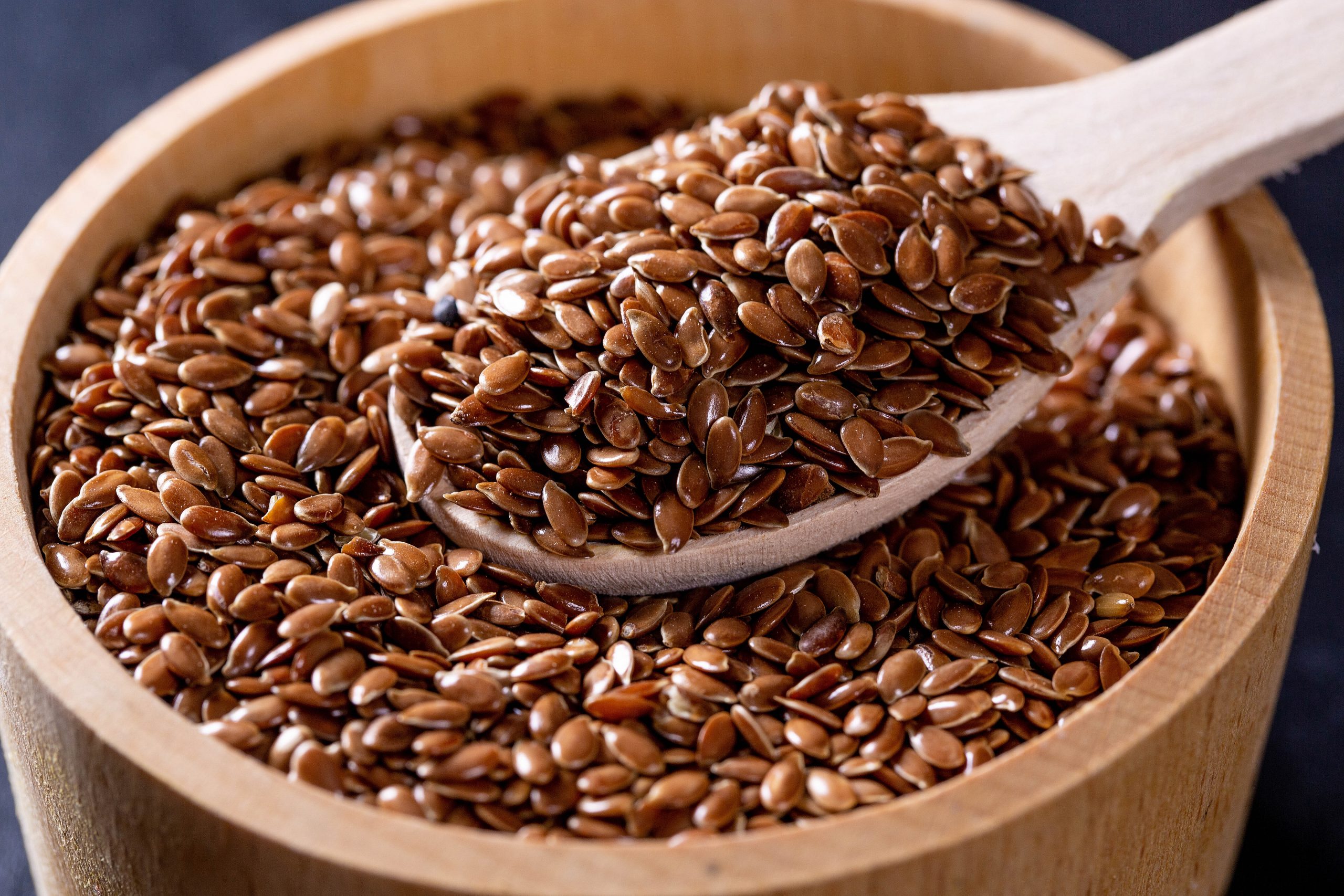
Introduction: 🌟 Flax seeds, also known as linseeds, have been consumed for centuries and are highly regarded for their nutritional value and potential health benefits. These small, golden-brown seeds are packed with essential nutrients that support overall health and well-being. In this comprehensive blog post, we will explore the incredible benefits of flax seeds and provide detailed guidance on how to incorporate them into the Indian diet, making the most of their nutritional value and versatility.
6 Health Benefits of Flax Seeds: 🌿
Flax seeds offer a plethora of health benefits due to their rich nutritional profile. Let’s delve deeper into the specific advantages of incorporating flax seeds into your daily diet:
- Omega-3 Fatty Acids: Flax seeds are one of the best plant-based sources of omega-3 fatty acids, particularly alpha-linolenic acid (ALA). These essential fatty acids play a crucial role in brain health, heart health, and reducing inflammation in the body. Consuming flax seeds can support cognitive function, improve cardiovascular health, and contribute to overall well-being.
- Dietary Fiber: Flax seeds are an excellent source of dietary fiber, containing both soluble and insoluble fiber. The soluble fiber forms a gel-like substance in the digestive system, which aids in regulating blood sugar levels, reducing cholesterol levels, and promoting a healthy gut microbiome. The insoluble fiber adds bulk to the stool, supporting regular bowel movements and preventing constipation.
- Lignans: Flax seeds are rich in lignans, a type of polyphenol antioxidant. These lignans have been associated with potential anti-cancer properties and may help balance hormone levels in the body. They also have antioxidant and anti-inflammatory effects, contributing to overall health and well-being.
- Heart Health: The combination of omega-3 fatty acids, fiber, and lignans in flax seeds makes them particularly beneficial for heart health. Omega-3 fatty acids help reduce inflammation, lower blood pressure, and improve cholesterol levels, reducing the risk of cardiovascular diseases. The fiber content helps maintain healthy cholesterol levels and supports optimal heart function.
- Digestive Health: Flax seeds are renowned for their digestive benefits. The high fiber content promotes regular bowel movements, prevents constipation, and supports a healthy digestive system. Consuming flax seeds can alleviate digestive discomfort and contribute to gut health.
- Weight Management: Flax seeds can be a valuable addition to a weight management plan. The combination of dietary fiber, healthy fats, and protein in flax seeds promotes satiety, helping to control appetite and prevent overeating. Including flax seeds in your meals can support weight loss efforts and help you maintain a healthy weight.
5 Ways of Adding Flax Seeds in the Indian Diet: 🍽️
Flax seeds can be easily incorporated into the traditional Indian diet, adding a nutty flavor, texture, and a boost of nutrition to various dishes. Here are some delightful and creative ways to include flax seeds in your daily meals:
- Flax Seed Powder: Grind flax seeds into a fine powder using a blender or coffee grinder. This flax seed powder can be added to various dishes like rotis, parathas, dosas, or chapatis. Simply sprinkle the powder into the dough while kneading to enhance the nutritional profile of your homemade bread.
- Flax Seed Chutney: Roast flax seeds and grind them with other ingredients like coconut, roasted peanuts, green chilies, and spices to create a flavorful chutney. This chutney can be enjoyed with dosas, idlis, or as a side condiment with meals, adding a delicious twist to your culinary creations.
- Flax Seed Laddoos: Combine roasted flax seeds with jaggery or dates, nuts, and a dash of ghee to make delicious and nutritious laddoos. These laddoos serve as healthy snacks or energy-boosting treats, perfect for satisfying your sweet cravings.
- Flax Seed Yogurt: Mix ground flax seeds with yogurt, a pinch of salt, and spices like cumin powder or chaat masala. This flavorful flax seed yogurt can be enjoyed as a side dish or used as a topping for rice or rotis, adding a tangy and nutritious element to your meals.
- Flax Seed Smoothies: Blend soaked flax seeds with a variety of fruits, yogurt, and a natural sweetener of your choice to create nutritious and filling smoothies. Experiment with different flavor combinations to find your favorite combination. You can also add a tablespoon of flax seed powder to your existing smoothie recipes for an extra nutritional boost.
How to use Flax Seeds for Weight Loss
Flax seeds can be a valuable addition to a weight loss diet due to their high fiber content, healthy fats, and other beneficial nutrients. Here are some tips on how to use flax seeds for weight loss:
- Ground Flax Seeds: Grind flax seeds into a fine powder using a blender or coffee grinder. Ground flax seeds are easier for the body to digest and absorb nutrients from. You can add a tablespoon of ground flax seeds to your meals, such as smoothies, yogurt, oatmeal, or salads. The fiber in flax seeds helps promote feelings of fullness, reducing overall calorie intake.
- Flax Seed Water: Soak a tablespoon of whole flax seeds in a glass of water overnight. In the morning, strain the water and drink it on an empty stomach. This flax seed water helps promote digestion, supports bowel regularity, and aids in weight management.
- Flax Seed Smoothies: Add ground flax seeds to your favorite smoothie recipes. Combine fruits, leafy greens, a source of protein like yogurt or protein powder, and a tablespoon of ground flax seeds. The fiber and healthy fats in flax seeds help keep you satisfied and prevent overeating.
- Flax Seed Meal Replacement: Create a nutrient-rich meal replacement by blending ground flax seeds with plant-based milk, fruits, vegetables, and a protein source like tofu or nut butter. This can serve as a filling and nutritious option for those looking to replace a high-calorie meal with a lighter alternative.
- Flax Seed Energy Balls: Make energy balls or protein bars using ground flax seeds, nuts, dates, and other healthy ingredients. These homemade snacks provide a balance of fiber, protein, and healthy fats, helping to curb cravings and promote weight loss.
- Flax Seed in Baking: Replace a portion of flour with ground flax seeds in baking recipes like muffins, pancakes, or bread. This not only adds a nutritional boost but also increases the fiber content of your baked goods.
Remember to start with small amounts of flax seeds and gradually increase your intake to allow your body to adjust. It’s also essential to drink plenty of water when consuming flax seeds as they absorb liquid and expand in the digestive tract.
Incorporating flax seeds into a well-balanced diet and regular exercise routine can support weight loss efforts and promote overall health. However, it’s important to consult with a healthcare professional or registered dietitian before making any significant changes to your diet, especially if you have any underlying health conditions or are taking medications.
Conclusion: 🌈 Flax seeds are a true nutritional powerhouse, offering a wide range of health benefits when incorporated into the Indian diet. With their abundance of omega-3 fatty acids, dietary fiber, lignans, and heart-healthy properties, flax seeds are a valuable addition to promoting overall health and well-being. By exploring the various ways to include flax seeds in your meals, you can elevate the nutritional value of your dishes and enjoy their unique texture and flavor.
Join our vibrant community of food lovers at Eatlo Community to share your experiences, discover new recipes, and embrace a healthy and delicious lifestyle together.
🌿🌱













